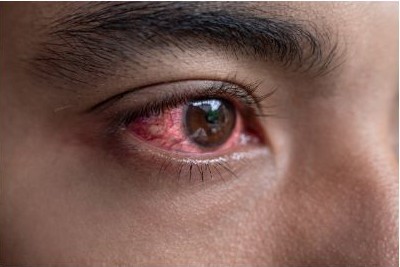Sight To See Blog
Learn more about optometrist care in our blog!

It’s a common, yet commonly misunderstood eye condition that affects people of all ages: conjunctivitis, or commonly referred to as pink eye. Pink eye is characterized by the inflammation of the conjunctiva, the thin membrane that covers the white part of the eye and the inner surface of the eyelids. Today we’ll uncover the various causes of this condition, shedding light on how to identify and manage each type effectively.

When it comes to eye care, there are different professionals involved in ensuring your vision health. However, it's common to feel confused about the roles and responsibilities of an optician, optometrist, and ophthalmologist. Keep on reading to help shed light on the distinct roles of these eye care experts, clarifying their functions and how they contribute to your overall eye health. Understanding their unique roles can help you make informed decisions and seek the right care for your vision needs.

At Sight To See Eyecare & Eyewear, we understand how important your child’s vision is to their overall well-being and success in life. With myopia (nearsightedness) becoming more prevalent, it’s essential to address this condition early and effectively. That’s why we offer comprehensive myopia control strategies tailored to protect your child’s eye health. Let's dive into what myopia is, why it’s on the rise, and the innovative solutions we provide to help manage and slow its progression. We are committed to empowering families with the knowledge and tools needed to combat this growing concern.

When it comes to addressing unique vision challenges, specialty contact lenses offer a world of possibilities for individuals who struggle with common and complex eye conditions. At Sight To See Eyecare & Eyewear, we provide tailored solutions, including specialty lenses, to help you achieve clear, comfortable vision.

Your child's eye health is a crucial aspect of their overall well-being. Healthy eyes not only enable clear vision but also play a vital role in their physical, social, and academic development. From learning to play and explore the world around them to excelling in the classroom, good vision is essential for a child's growth and success.

In our digital age, screens have become an integral part of our daily lives. From laptops and smartphones to tablets and desktop computers, we spend countless hours gazing at these devices for work, entertainment, and communication. However, this prolonged exposure to digital screens can take a toll on our eyes, leading to a condition known as computer vision syndrome.

When it comes to achieving clear vision, there are several options available to correct refractive errors, but what are they? Is clarity the same in contacts vs glasses? From glasses to contact lenses, and even advanced procedures like laser eye surgery, the world of vision correction can sometimes be overwhelming. In this blog post, we aim to provide clarity into the world of vision correction, exploring the pros and cons of different methods including glasses, contact lenses, and laser eye surgery. Whether you're a long-time glasses wearer or considering a more permanent solution, understanding the advancements and considerations of each option can help you make an informed decision about your vision correction needs.

We all know that smoking poses numerous health risks, but did you know it can also significantly impact your eyes? In this blog post, we will uncover the detrimental effects of smoking on eye health. From an increased risk of cataracts and macular degeneration to dry eyes, smoking can have a profound impact on the well-being of your eyes. However, there is good news – quitting smoking can help mitigate these risks and improve your overall eye health. Let's explore the relationship between smoking and eye health and discover strategies for smoking cessation.

Your eyes are complex organs that require a variety of nutrients to function optimally. Maintaining your vision and eye health is not merely a matter of getting enough rest or ensuring you have the correct prescription for your glasses. It's also about providing your body with the right fuel to support these vital organs. Your lifestyle choices, including your diet, have a significant impact on your overall eye health.

When preserving our vision, early detection and management of eye diseases are paramount. One such disease is glaucoma, often referred to as the "silent thief of sight" due to its gradual and painless progression. Regular eye exams play a crucial role in detecting glaucoma, as one aspect of an eye exam is measuring intraocular pressure (IOP), a key indicator for glaucoma. In this blog post, we will explore three commonly used methods for measuring IOP: the air puff (non-contact) tonometry, Goldmann tonometry, and the iCare tonometer. Understanding these techniques will shed light on how eye care professionals assess your eye health.






